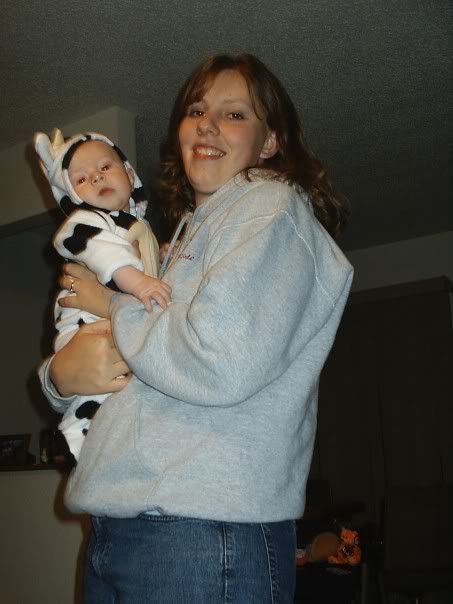It’s been a pretty exciting week on the farm as far as births go. Since I can remember, I’ve been fascinated with calves, especially cows giving birth. Nothing could get me out to the barn faster on a cold, January night than a cow in labor. Like any birth, it can be a gory sight if you’re not used to it. I’m not usually a blood and guts kind of person, but a calf being born is a pretty special sight. There’s nothing more precious on a farm than watching a wet, blood smeared creature taking it’s first breath.
This past week we had one exciting birth and one not so exciting except for me. It started Thursday night. After Nate came home from chores, he told me they’d treated a cow expected to calve that night for milk fever. Usually, cows only get this after they calve, but this stubborn bossy got it before. Although she had the tell-tale signs of being in labor, Nate said she didn’t seem to be making much progress.
“I don’t know,” he said. “Maybe we should have called the vet.”
Since she hadn’t been trying very long, they decided to give her the night to work on it herself. Cows are shy creatures when it comes to calving, and in all likelihood, she would have her calf overnight. But the next morning when Nate and his dad got to the barn, she still hadn’t gotten any farther. When the vet arrived, she checked the cow and discovered she was carrying twins. Although many farm animals have multiple births, twins usually mean trouble in dairy cows. Unfortunately, both calves had died before they could be born.
The calves were a little tangled up and one had it’s leg back which was why the cow couldn’t have them herself. After getting all the parts in the proper places, she helped the cow deliver one heifer calf, then another heifer calf. But when the vet checked the cow one more time, she got a shock.
“There’s another one in there,” she said in bewilderment. The young vet had never seen triplets before. The third heifer calf was delivered. Triplets are rare in dairy cows. Experts at the University of Texas estimate it only occurs once in 150,000 births. That’s about the same odds as Jacob becoming a professional athlete. Even more rare, and sickening for us, these triplets were all females.
On a less exciting note, the first of my heifers calved Sunday afternoon. Nate and I transplanted four registered heifers, two Holstein and two Ayrshire, to the Northwoods last spring. After months of waiting, one finally joined the milking herd. This heifer, Tasha, had a bull calf. He was really cute and reminded me of a badger. But, since bull calves don’t have a place on our farm, he was sent on his way today. My other three heifers are due in the spring and early summer. Thanks to ultrasound technology, I know I’ll have at least one heifer calf to spoil.
Wednesday, November 22, 2006
Subscribe to:
Post Comments (Atom)

No comments:
Post a Comment